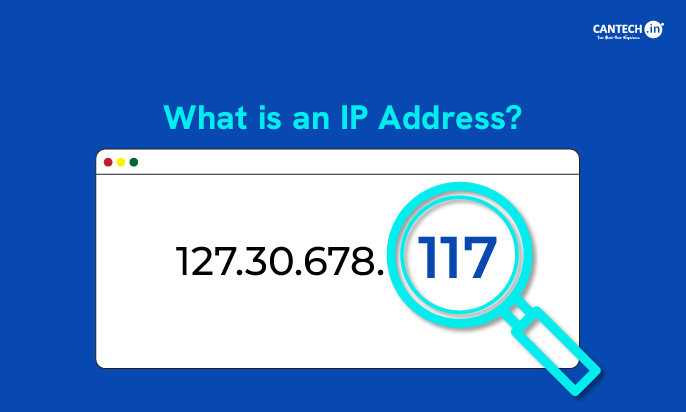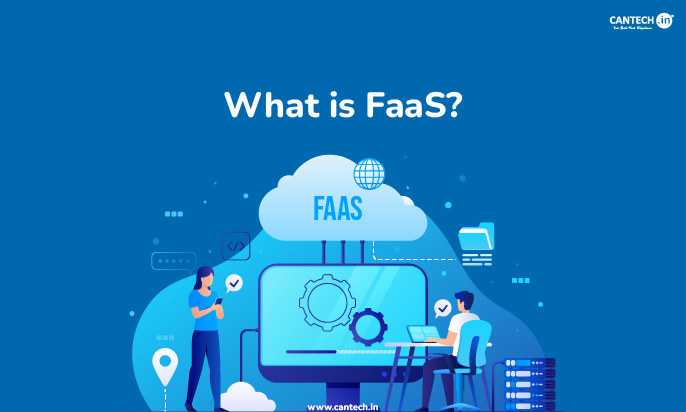Introduction
The internet is a huge network where billions of devices talk to each other. But how do they know where to send the information? Also, when we interact with various devices and platforms online, how does data travel from one point to another? Well, to know all this, you need to learn ‘What is an IP address’, and how does it work?
This blog will discuss the same and various other related aspects, such as the different types, the importance of their security, etc.
What is an IP Address?
Definition of IP Address
The full form of IP address is Internet Protocol Address. It is a unique number assigned to every device that connects to a computer network. Thus, it functions as the identity of the device and communicates with others on the network using the same.
Moreover, it helps devices send and receive information and ensures that the information reaches the right place. In other words, it helps direct the communication traffic across the internet or a local network.
Thus, you need to rely on IP addresses (even if you don’t know them) for any type of task such as browsing the web, using your favourite social media platforms, etc.
It is mostly written in a set of four numbers separated by dots (like 192.168.1.1). Each number can range from 0 to 255. Thus, the full range of possible IP addresses spans from 0.0.0.0 to 255.255.255.255.
Organizations like the Internet Assigned Numbers Authority (IANA) (part of ICANN (Internet Corporation for Assigned Names and Numbers) allocates and regulates these addresses. They distribute IP addresses efficiently and securely across the globe.
How do IP Addresses Work?
Below is the step-by-step working of IP addresses –
- Every device, may it be a computer, smartphone, or any connected gadget, gets a unique IP address (like a house has its address). It identifies itself on a network using the same. Thus, it is a unique identifier.
- Next comes the step of communication protocol. Well, the Internet Protocol (IP) helps to manage how data is transferred across networks. For this, it breaks the data into small multiple packets and they are then sent from one device to another. Each packet has the sender’s and receiver’s (destination) IP addresses attached.
- Routers along the way read the destination address and figure out the best route for the data to travel. This data routing step ensures the data arrives at the right destination quickly. The routers constantly update their records of the fastest routes.
- Local Area Networks (LAN) and Wide Area Networks (WAN)
LAN – Devices communicate directly using private IP addresses assigned manually (static IP) or automatically (DHCP) in a home or office network.
WAN – Devices that communicate over a broader network need the data packets to travel through various routers. Thus, the internet acts as a global network connecting these routers.
- Network Address Translation (NAT)
Multiple devices share a single public IP address when connecting to the internet in many home or small business networks. This process is called NAT. It helps conserve the number of IP addresses needed and adds an extra layer of security by keeping the internal devices’ IP addresses hidden.
How to Look Up IP Addresses
It is super easy to find your IP address. Simply search for “What is my IP address?” on Google. You will see your public IP address right at the top.
Well, there are other websites too that display this information. They show your public IP address as your device has already communicated with the site. Some websites such as IPLocation, even display the name of your internet service provider (ISP) and your approximate location.
However, it is difficult to find the actual physical location of an IP address. It usually requires legal procedures like a search warrant.
Check your private IP address on various devices by following the below steps –
How to Find Your IP Address on Windows
- Open Start
- Go to Settings > Network & Internet > Wi-Fi.
- Next, click on Properties.
- Scroll down to see your IP address.
Alternatively, you can use the Command Prompt –
- Type cmd in the search bar and open the command prompt.
- Type ipconfig and hit enter to see your network details (including the IP address).
How to Find Your IP Address on a Mac
- Go to the Apple Menu
- Then to System Settings > Wi-Fi > Details.
Alternatively, go to System Preferences > Network. You will find the IP address listed there.
How to Find Your IP Address on an iPhone
- Open Settings > Wi-Fi
- Tap the blue info icon next to your connected network.
- Your IP address will be displayed under the DHCP tab.
How to Find Your IP Address on Android
- Go to Settings
- Tap on About phone > Status Information.
- Your IP address will be listed there.
Types of IP Addresses
Private IP Address vs Public IP Address
Every device within your local network gets its unique private IP address to communicate within your network. For example – smartphones, laptops, smart TVs, etc on home wifi. However, these addresses are not visible to devices outside the network.
On the other hand, devices to communicate over the internet use Public IP addresses. Your Internet Service Provider (ISP) assigns a public IP to your router. It assigns private IPs to devices in your home or business network from there.
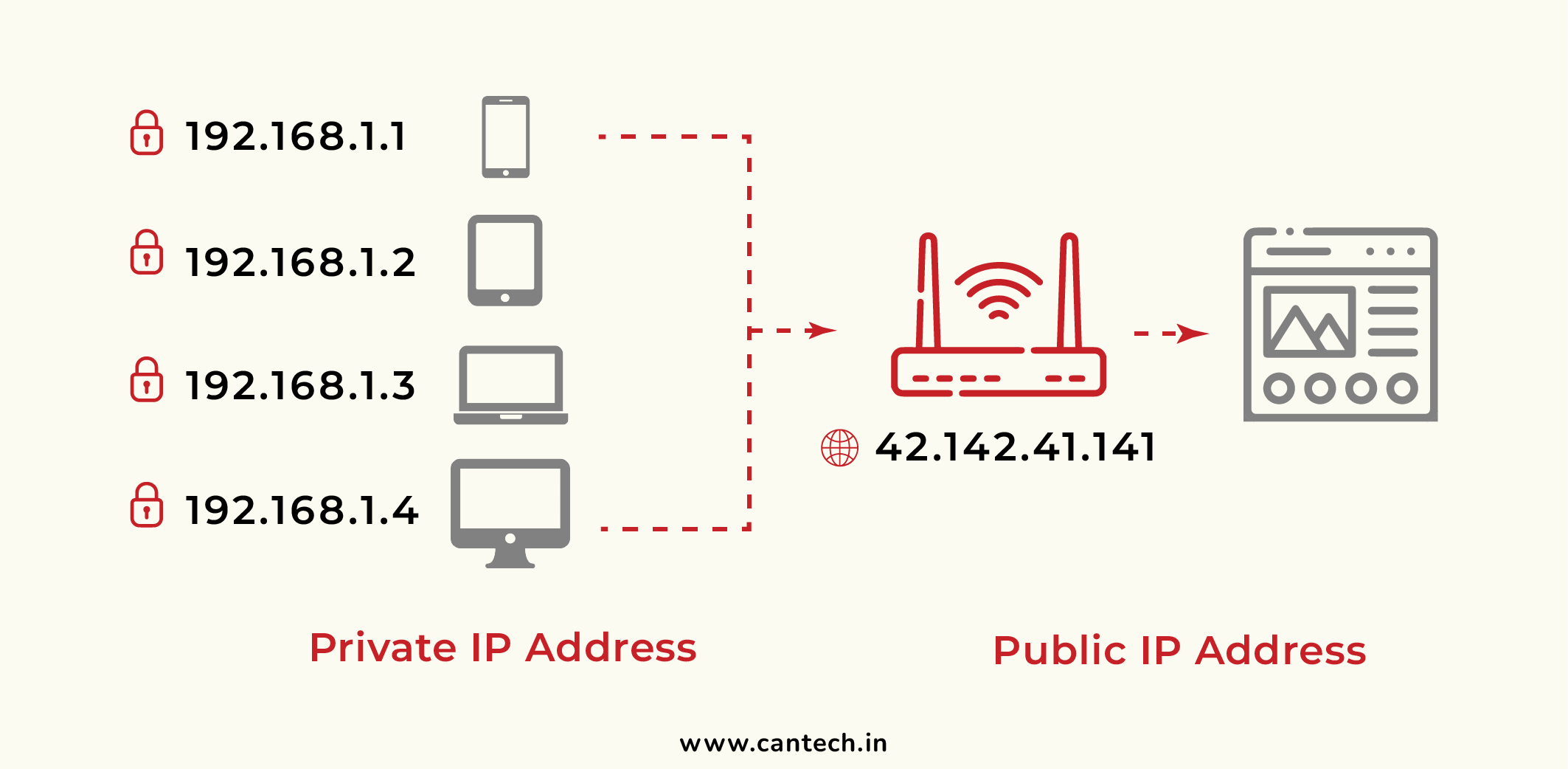
Static IP Address vs Dynamic IP Address
Static IP addresses are fixed. Your network assigns a static IP to a device and it remains the same. Businesses that host their own servers or need uninterrupted access use this type of IP so that their services can always be found at the same address.
Whereas, Dynamic IPs are temporary. They are assigned from a pool of available addresses using the Dynamic Host Configuration Protocol (DHCP). Also, they change from time to time and are more cost-effective for general use.
Consumer IP Addresses
Consumers use both private and public IP addresses. The private IP is used for devices in their home or business network. Also, public IP is used to communicate with the outside world.
Website IP Address
Shared IP Addresses mean small websites sharing an IP address with other sites hosted on the same server. This is an affordable solution. However, if your resource requirement is higher it might affect performance or reputation.
Dedicated IP Addresses are used by websites that need more control or expect high traffic. This provides better performance and helps maintain a good reputation.
IPv4 vs IPv6
What is IPv4?
IPv4 (Internet Protocol version 4) is the most common type of IP address. It uses 32 bits and is written as four sets of numbers ranging from 0 to 255. Example: 192.168.1.1.
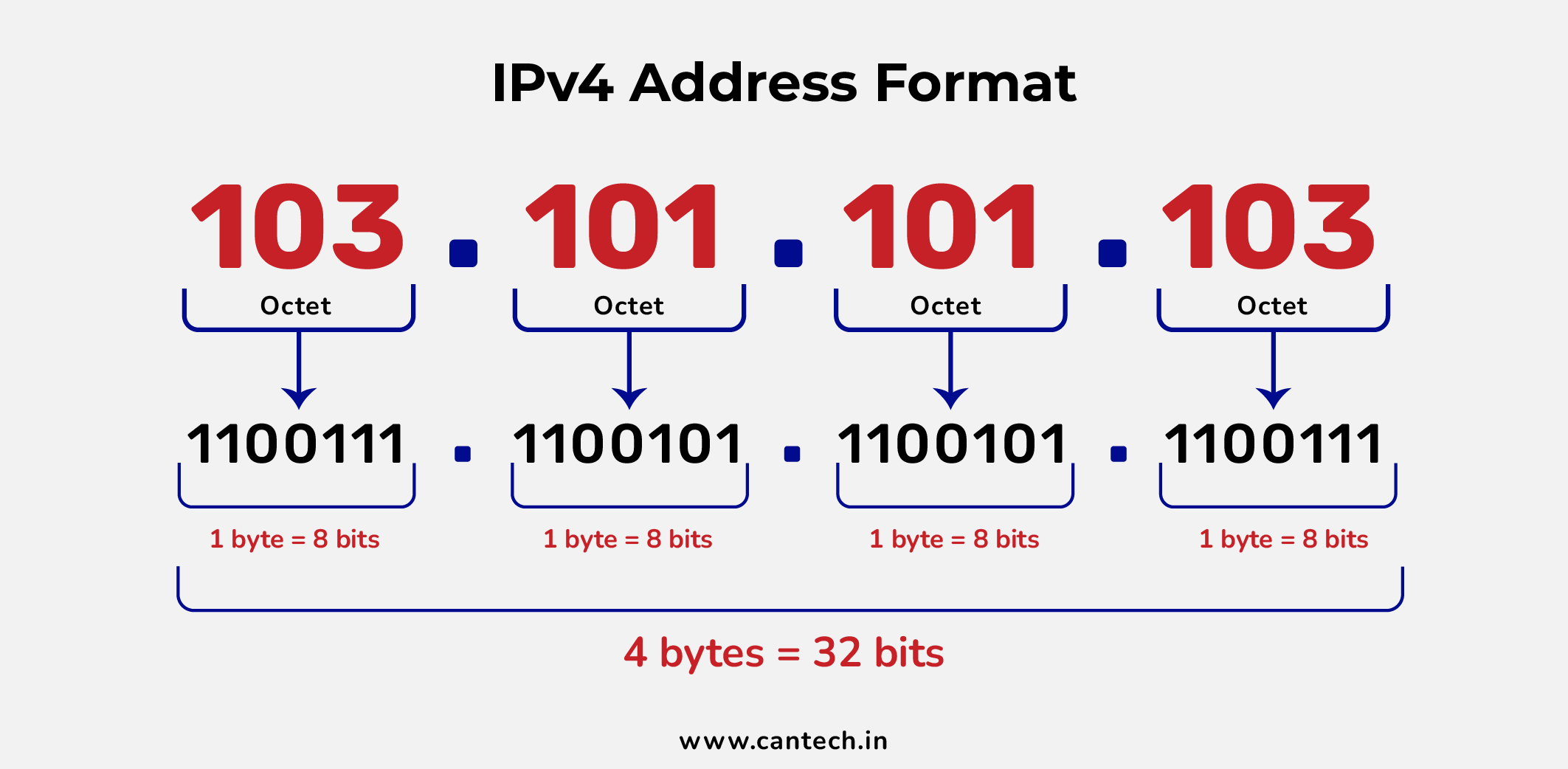
What is IPv6?
IPv6 is the newer version of IP addressing. They are made to address the shortage of IPv4 addresses. It uses 128 bits for a vastly larger number of unique addresses. IPv6 addresses are expressed in eight groups of four hexadecimal digits.
Example of an IPv6 Address: 2001:0db8:85a3:0000:0000:8a2e:0370:7334
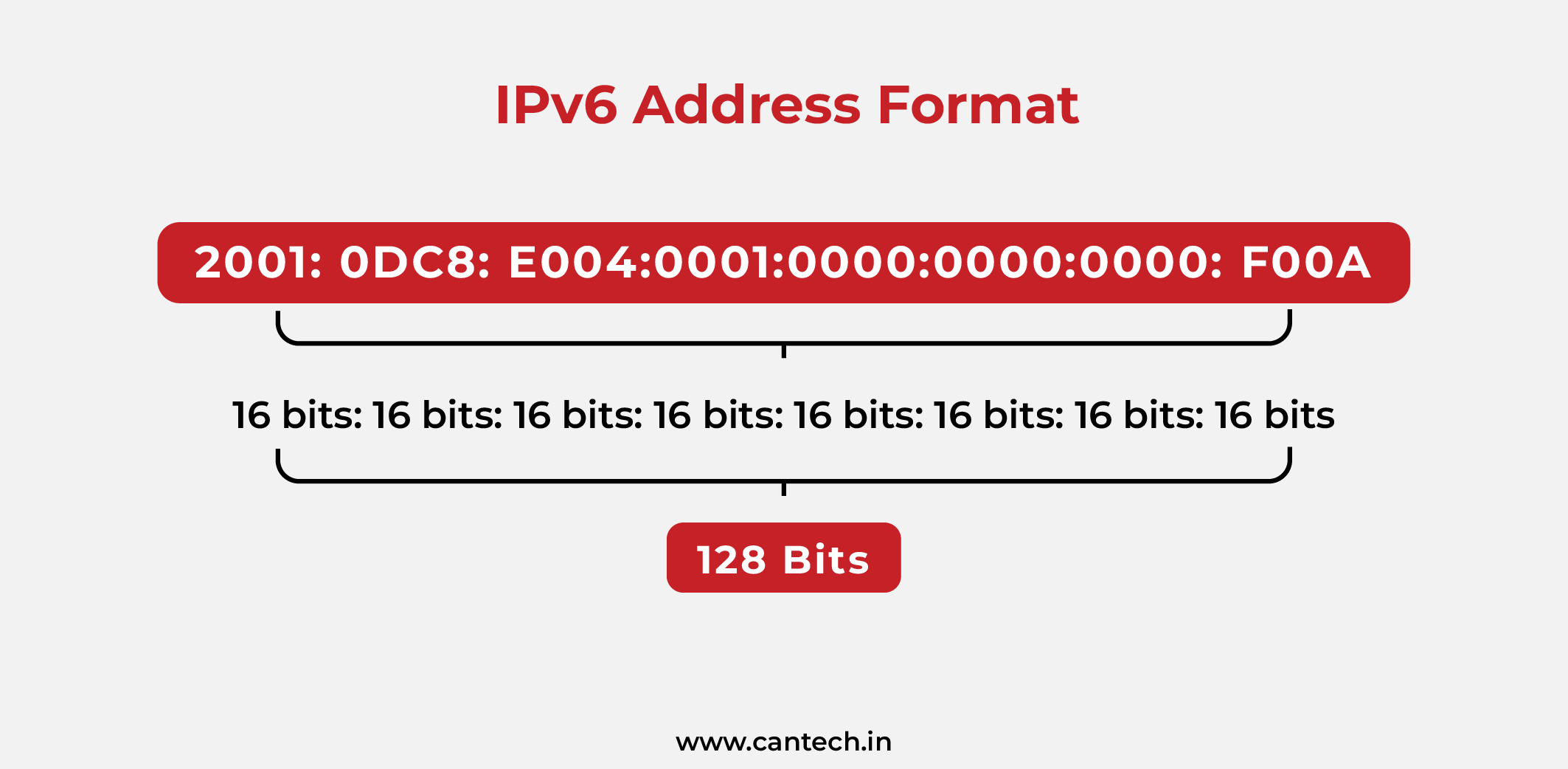
Classes of IPv4 Addresses
Below are the different classes of IPv4 addresses based on the range of addresses and their intended use
Class A
- Used for very large networks
- Supports up to 16 million hosts
- 1.0.0.0 to 127.255.255.255
Class B
- For medium-sized networks
- With up to 65,000 hosts
- 128.0.0.0 to 191.255.255.255
Class C
- Used for smaller networks like homes or small businesses
- With up to 254 hosts
- 192.0.0.0 to 223.255.255.255
Class D
- Reserved for multicast addresses
- 224.0.0.0 to 239.255.255.255
- 224.0.0.0 to 239.255.255.255
Class E
- Reserved for experimental purposes
- 240.0.0.0 to 255.255.255.255
IP Address Security Threats
You must stay aware or IP addresses can open the door to several security risks, such as –
Online Stalking
Criminals can use your IP address to track your location and activities online. They may access sites like whatismyipaddress.com to get a general idea of where you are.
Hacking
Hackers can use your IP address to attempt to access your device by exploiting open ports. This could lead to data theft or even control over your device.
DDoS Attacks
A Distributed Denial-of-Service (DDoS) attack overwhelms a server with traffic so it can crash. These attacks are often directed at an IP address.
Identity Theft (Man-in-the-Middle Attacks)
When cybercriminals know your IP address, they can impersonate you or steal sensitive data. They might use it to send phishing messages or to trick you into revealing personal information.
Conclusion
So, what is an IP address? It is a very essential aspect of how devices connect and communicate. By understanding how they work, you can stay secure and ensure smooth communication across networks.
Cantech offers a range of services related to IP addresses. We provide BitNinja Server Security with a real-time IP reputation to protect your hosting from botnets and cyber attacks. Also, our web hosting plans come with unique IP addresses. Moreover, Cantech offers guidance on attaching public IPs to your cloud instances too. Reach out!
FAQs
What is an IP Address?
An IP address helps to identify the device and communicate with other devices. It is a unique number assigned to every device connected to the internet.
How Can I Find my IP Address?
To find a public IP address, search ‘What is my IP address’ on a search engine.
What Happens if Someone Tries to Hack my IP Address?
The hacker of an IP address could try to get to your personal information or affect your internet connection. So, you must have a good firewall and security system to protect your network.
When Should You Use a VPN?
VPN is a great way to protect your IP address and online activity. You should consider is when –
- You are on public Wi-Fi
- Traveling to access restricted content
- Need secure access to company networks working remotely
- Need privacy reasons to hide your browsing habits from advertisers
What is a Loopback IP Address?
When a device wants to send data to itself for testing or debugging purposes, it uses a loopback IP address.
What’s the Difference Between a MAC Address and an IP Address?
A MAC address uniquely identifies a device’s network interface controller. Whereas, an IP address identifies the device’s connection to the network.
What is IP Address Used For?
An IP address helps computers and devices find each other on the internet. It tells the system where to send and receive data. Without it, your device cannot connect to any website or online service.
What is an IP Address in Networking?
In networking, an IP address works like an identity for every connected device. Data can travel correctly from one machine to another in a network. Thus, it is needed for communication to happen between systems.


